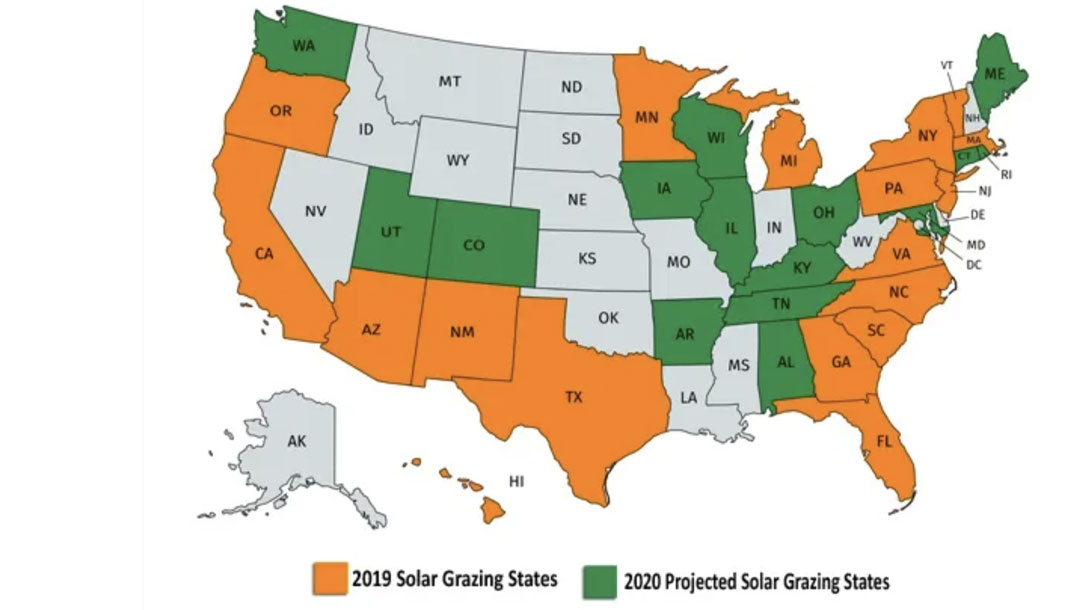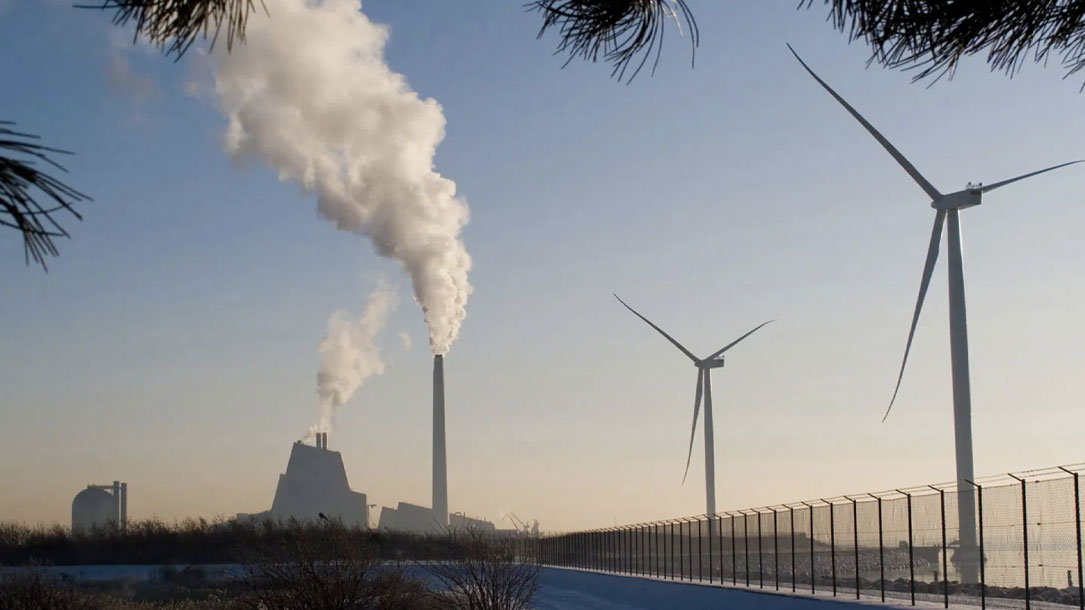
Solar grazing: A new income stream for livestock producers
Utility-scale solar arrays may cover 3 million acres across the U.S. by 2030, according to the National Renewable Energy Lab (NREL). This is causing tension with farmers and farmland advocates, as the panels are often sited on good agricultural land, displacing current production.
One solution is to restrict solar developments from being installed on farmland. But there are other solutions worth pursuing, too. Most large-scale solar arrays are located in rural areas where economies are hurting and farmer numbers are dwindling…

Greens: Divided on ‘clean’ energy? Or closer than they appear?
Solar, wind, and geothermal sources currently account for just 11% of U.S. electricity, with another 7% from hydroelectric dams, 20% from nuclear, 19% from coal, and 40% from gas. A host of energy modeling studies have concluded that renewable energy could be scaled up to supply 80-90% of U.S. electricity demand, but meeting the final 10-20% is exceedingly challenging.
The 2035 report by the UC Berkeley Goldman School of Public Policy estimated that the U.S. could achieve 90% emissions-free electricity by 2035, including 70% from wind and solar with batteries, 20% from nuclear, and 10% from gas…

Glasgow Calling: In a crucial year for climate, The Nature Conservancy appoints renowned climate scientist and communicator Professor Katharine Hayhoe
Riding a wave of optimism about renewed global climate action, The Nature Conservancy (TNC) is thrilled to announce the appointment of Professor Katharine Hayhoe as its new Chief Scientist…

How to talk honestly to kids about climate change — and still give them hope
Climate change is no longer a future issue. It’s already affecting nearly every aspect of our lives and our children’s futures. It’s making our heat waves more deadly, our storms more intense, and our wildfires burn with ferocity.
When we talk to our kids, we have to be honest. Climate change is real, and it’s serious. But the most important thing we can give them is hope: that there are solutions, and everyone has something to contribute no matter their age…

‘Climate change’ may be a key factor in declining butterfly populations
As Pennisi points out, “butterflies are at risk in open spaces, too.” She writes: “Art Shapiro, an insect ecologist at the University of California, Davis, and colleagues have shown that over the past 35 years, butterflies are disappearing even in pristine protected areas such as the Sierra Nevada mountain range in the western United States”…

Scientists lay out 10 golden rules for restoring forests
“Scientists from the Royal Botanic Gardens, Kew (RBG Kew) and Botanic Gardens Conservation International (BGCI) have set out ten ‘golden rules’ for reforestation, published today in an open-access article in the leading journal Global Change Biology…”

The reason wild forests beat plantations
In January, scientists at Royal Botanic Gardens Kew in the UK warned that tree planting was often being presented as an easy answer to the climate crisis, and a way out for businesses to mitigate their carbon emissions. But it was not as simple as it seemed. The wrong trees in the wrong places can cause considerably more damage than benefits, and fail to help people, nature, or capture carbon.

Why put a price on carbon?
It also might mean that you encourage your local and regional conservation groups to support the Citizen Climate Lobby’s work on bipartisan efforts to put a price on carbon pollution…and then talk about why they are doing that.

Moose in a warming climate
“Moose populations across the northern United States are declining as the climate warms up. You wouldn’t think that a temperature increase of only 1.5 to 2 degrees Fahrenheit would kill a moose, but it appears that it does. In northwestern Minnesota, nearly all the moose have disappeared, and in northeastern Minnesota over 90 percent of the moose calves are dying during some years. Moose hunting is no longer allowed in Minnesota…”

30 x 30: NRDC’S commitment to protect nature and life on earth
“To prevent mass extinctions and bolster resilience to climate change, scientists warn that we must protect at least 30 percent of our lands, rivers, lakes, and wetlands by 2030. At the same time, we must also fully and highly protect at least 30 percent of our oceans by 2030 to help safeguard marine ecosystems and fisheries that provide food, jobs, and cultural sustenance to billions around the world.
We have the tools to create a better, healthier future for our planet—and ourselves—but we must act now…”












